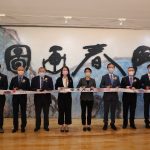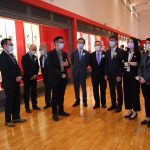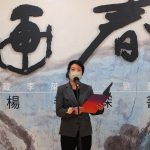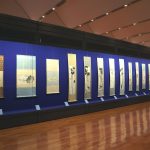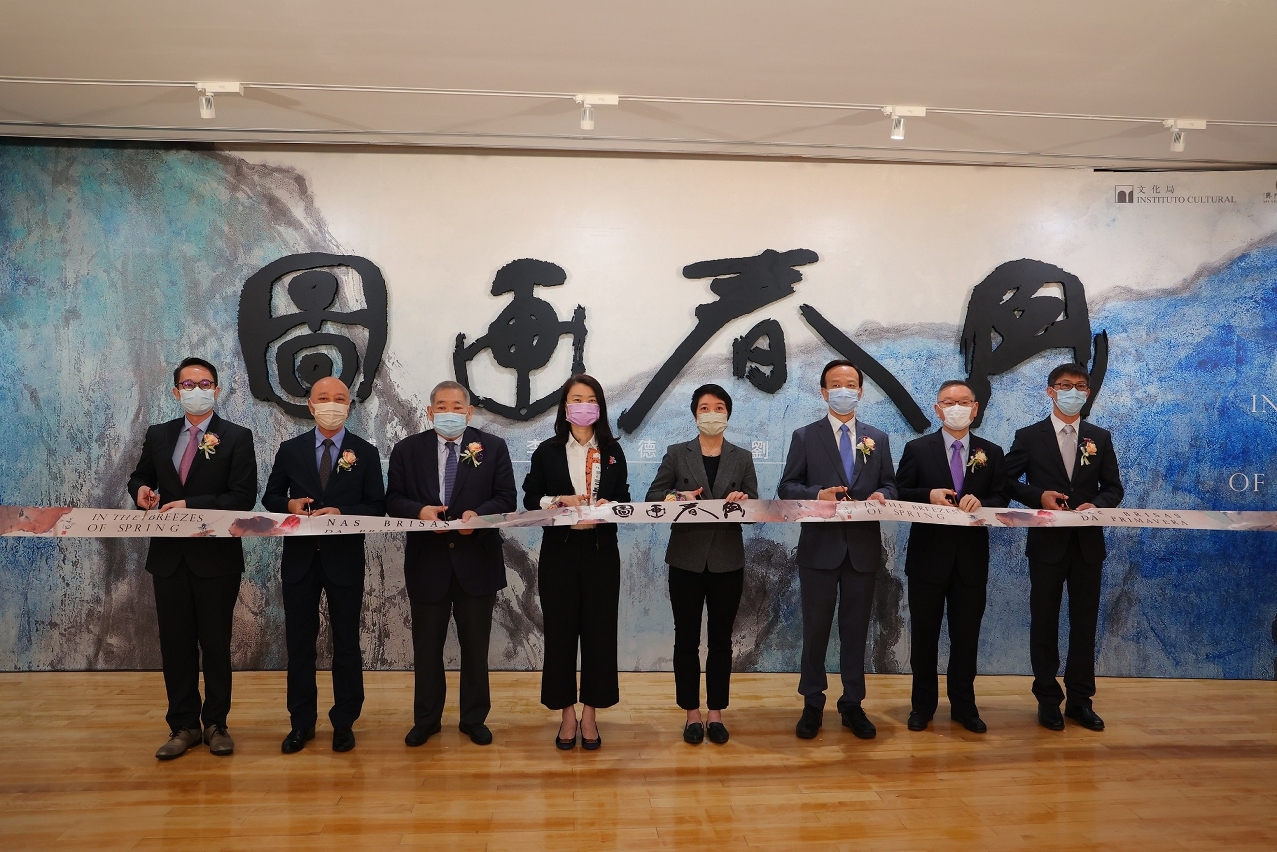 Exhibition of paintings and calligraphy by Yang Shanshen opens at MAM
Exhibition of paintings and calligraphy by Yang Shanshen opens at MAM
Organized by the Macao Museum of Art (MAM) under the auspices of the Cultural Affairs Bureau, the exhibition “In the Breezes of Spring: Paintings and Calligraphy by Yang Shanshen Donated to the MAM Collection by Lei Loi Tak and Lao Ngai Leong” was inaugurated on 6th April, on the 4th floor of MAM. The opening ceremony was officiated by the President of the Cultural Affairs Bureau of the Macao SAR Government, Leong Wai Man; the Head of the Department of Publicity and Culture of the Liaison Office of the Central People's Government in the Macao SAR, Bai Bing; the Deputy of the Macao Special Administrative Region to the National People’s Congress of the People’s Republic of China and the donor, Lao Ngai Leong; the President of the Macao Chamber of Commerce, Chui Sai Cheong; the President of the Yu Un Chinese Calligraphers and Painters Association of Macao, José Chui Sai Peng; the President of the Macau Artist Society, Lok Hei; the artistic advisor of the exhibition, Chan Hou Seng; the son of the donor Lei Loi Tak and the President of Jao Tsung-I Petite Ecole Fan Club of the University of Hong Kong, Alberto Lei.
The masterpieces of Yang Shanshen (1913 – 2004), an accomplished veteran artist of the Lingnan School, feature both delicate and freehand brushwork with exquisite strokes and diverse styles, presenting the restrained beauty of landscapes, flowers, birds and figures. Adept at painting animals and highly skilled in modelling, Yang combined life sketching and the characteristic of Lingnan School. Meanwhile, his calligraphy was primordially simple. Yang established the “Chunfeng Painting Society” and cultivated a number of talents. The exhibition, opened in late spring, is titled “In the Breezes of Spring”, which implies all kinds of beauty in spring depicted in Yang’s works. MAM previously held the exhibitions “Recent Paintings and Calligraphy by Yang Shan Shen” and “Yang Shan Shen – The Legacy: Commemorative Exhibition of the Centennial Birth Anniversary” in 2004 and 2013 respectively. In addition to presenting the masterpieces Yang Shanshen created in his later years from various perspectives, the exhibition also highlights the generosity of Lei Loi Tak and Lao Ngai Leong with their donations.
The exhibition “In the Breezes of Spring” is held from today until 24th July 2022, showcasing the collection donated by Lei Loi Tak and Lao Ngai Leong for the first time, which includes 100 outstanding works of calligraphy and painting of flowers, birds and figures by Yang Shanshen. During the exhibition, the public who participate in guided tours and promotional activities held every Saturday and Sunday afternoon can receive the model of calligraphy of Yang Shanshen’s calligraphy. The public is welcome to visit and appreciate Yang’s artistic style of the Lingnan School. The Macao Museum of Art is open daily from 10am to 7pm (last entry at 6:30pm) including public holidays and is closed on Mondays. Admission is free. For more information about the exhibition, please visit www.MAM.gov.mo. For enquiries, please contact MAM through tel. no. 87919814 during office hours.
The Cultural Affairs Bureau has been strictly following the anti-epidemic guidelines of the Health Bureau and will implement appropriate measures for cultural activities in a timely manner. To comply with the SAR Government’s epidemic prevention and control measures, all participants must wear their own masks, undergo body temperature checks, present a valid “Venue QR Code” (also known as “Venue code”) and “Macao Health Code” of the day, maintain social distancing and follow the anti-epidemic and crowd control measures on-site.


